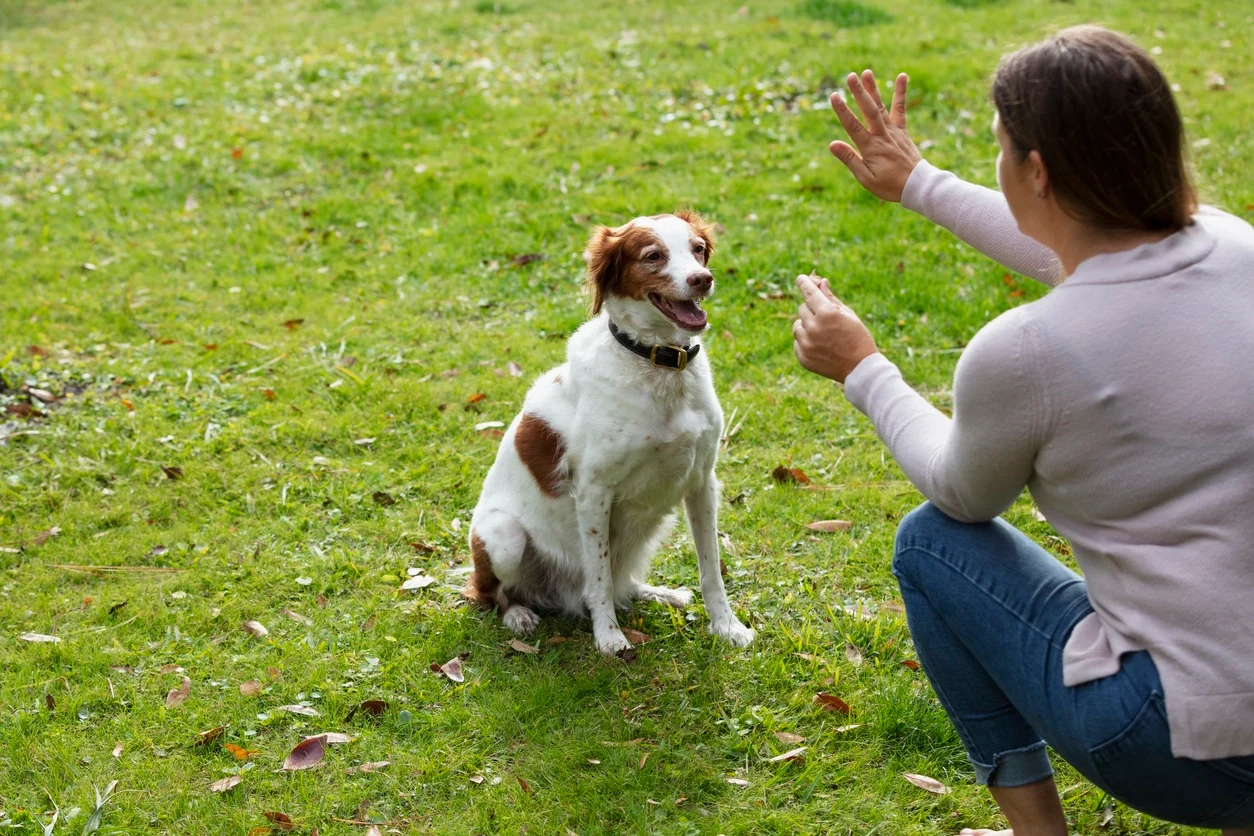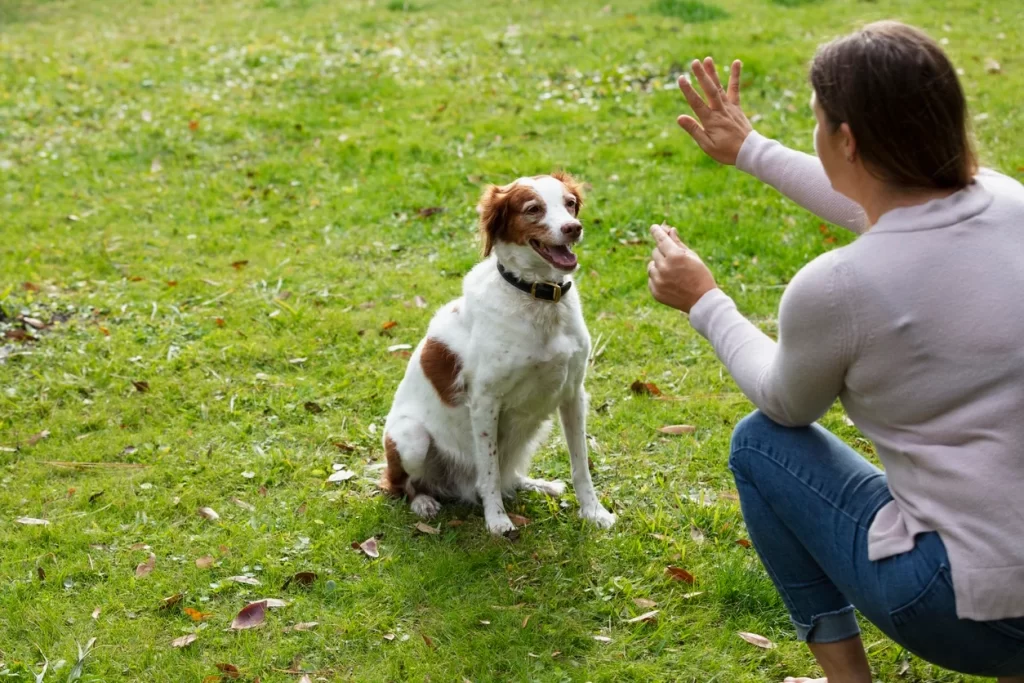Training your dog to listen is essential for ensuring good behavior, safety, and a strong bond between you and your furry companion. A dog that listens to your commands not only makes life easier but also builds mutual trust and respect. However, teaching a dog to listen consistently can be challenging, especially when distractions or poor communication come into play. This guide will walk you through the process of effectively training your dog to listen and respond to your commands, ensuring long-term success.
Understanding Why Dogs Don’t Listen
Before diving into training methods, it’s essential to understand why dogs sometimes don’t listen. A dog’s natural instincts can easily distract them, leading them to focus on stimuli like interesting smells, other animals, or even random objects. These instincts can make it hard for dogs to pay attention, no matter how much you call them. Moreover, unclear communication from the owner often results in the dog not understanding what’s being asked. If commands aren’t consistently used, or if mixed signals are given, the dog becomes confused and is less likely to respond. On top of that, inconsistency in training—such as not following through on commands or rewarding bad behavior—can exacerbate the problem, leading to a lack of attentiveness.
Building a Strong Foundation for Training
Once you recognize the reasons your dog may not be listening, it’s time to focus on building a strong foundation for training. One of the first steps is establishing yourself as a calm and confident leader. Dogs look to their owners for guidance, and a dog that sees you as a trustworthy leader is more likely to listen and follow instructions. Building a bond of trust through daily interaction, play, and affection is essential in this process.

At the same time, setting clear and consistent expectations is vital. If your dog knows what behavior is expected and understands the rewards that follow, they are more likely to comply. This foundation of leadership and trust creates the groundwork for effective communication, which is at the heart of getting your dog to listen.
Teaching Basic Commands to Gain Attention
With a strong foundation in place, the next step is teaching your dog basic commands that help capture their attention. Start with simple commands like “sit,” “stay,” and “come,” as these are the building blocks for any further training. These commands teach your dog to pause, focus on you, and respond appropriately. The process begins with showing your dog what each command means, then using treats or praise to reward them when they follow through. Positive reinforcement during this phase will ensure your dog associates listening with positive outcomes.
Introducing a “focus” command, where your dog learns to maintain eye contact with you, can be particularly effective in getting their attention. This command teaches your dog to look at you before expecting any further instructions, which can make them more receptive to listening in more distracting environments.
Equally important is maintaining consistency in the commands and signals you use. If you teach your dog to sit using one word or hand gesture, stick with it. Dogs thrive on repetition and structure, and changing commands too frequently can lead to confusion, hindering their ability to listen reliably.
Using Positive Reinforcement
As your dog begins to respond to basic commands, using positive reinforcement is crucial to reinforcing good behavior. Dogs are motivated by rewards, whether it’s treats, toys, or verbal praise. Each time your dog listens to a command, immediately reward them to help them associate their behavior with something positive. The timing of the reward is critical—if it’s delayed, your dog might not understand what action they are being praised for.
Over time, you can gradually reduce the reliance on treats as your dog becomes more consistent in their listening. However, always maintain some form of positive reinforcement, even if it’s a pat on the head or a cheerful “good dog!” This ensures that your dog stays motivated to listen and that the good behavior becomes a habit rather than a short-term response to food.
Correcting Poor Behavior Without Punishment
Even with consistent training, there will be times when your dog doesn’t listen or behaves inappropriately. It’s important to correct poor behavior without resorting to punishment, as punishment can create fear and anxiety, which can further hinder your dog’s ability to listen. Instead of punishing, focus on redirecting your dog’s attention back to you using a toy, a treat, or an engaging sound.

Another key factor is the tone of your voice. Dogs respond best to a calm yet firm tone. If you raise your voice in frustration, it may cause your dog to become anxious or uncertain, making them less likely to listen. By remaining patient and calm, you reinforce that listening to you leads to positive outcomes.
Avoiding Common Training Mistakes
One of the most common training mistakes owners make is repeating commands too many times. When you say a command like “sit” multiple times in a row without any follow-through, your dog learns that they don’t need to respond immediately. This leads to a delay in listening and compliance. Instead, give your dog one clear command, wait, and then gently guide them if necessary, reinforcing the behavior when they comply.
Another mistake is overwhelming your dog with too many commands at once. Focus on one command during each training session to ensure your dog fully understands it before moving on to the next. Additionally, it’s important to train in various environments to help your dog learn to listen even when distractions are present. A dog that only listens at home but not in public requires more training in different settings to generalize their behavior.
Training in Different Environments
Dogs often learn best in a controlled, distraction-free environment, so it’s wise to start training in a quiet place like your home or backyard. Once your dog reliably listens in these areas, gradually introduce them to environments with more distractions, like a park or during a walk. This helps them learn to focus on you and your commands even when there’s a lot happening around them.
Real-life situations present the best opportunities for training, as they mirror the scenarios where you’ll want your dog to listen. Whether it’s at the dog park, while crossing the street, or during social gatherings, practicing in a variety of environments will build your dog’s ability to listen consistently, no matter the situation.
Building Trust Through Regular Interaction
The more you interact with your dog, the more you can reinforce listening skills. Daily play and exercise provide excellent opportunities to practice commands and reward good behavior. These moments of interaction aren’t just about training but are also about building trust and strengthening the bond between you and your dog.

Additionally, keeping your dog mentally stimulated through games, puzzles, or new challenges will keep them engaged and more likely to listen. A bored dog is more prone to ignoring commands or acting out, so providing a variety of activities ensures they remain attentive.
Addressing Advanced Listening Challenges
Some dogs may present advanced challenges, particularly those with stubborn or independent personalities. Breeds with a strong independent streak may take longer to listen consistently, requiring more patience and tailored training methods. For these dogs, break down the training process into smaller steps and provide frequent rewards to motivate them.
Dogs with anxiety or fear-related issues might struggle to listen due to stress or nervousness. In these cases, creating a calm and safe environment is key to helping your dog feel comfortable enough to listen. Gradual exposure to triggers, combined with positive reinforcement, can help build their confidence and improve responsiveness over time.
Maintaining Long-Term Listening Success
Once your dog listens reliably, it’s important to continue reinforcing good behavior to maintain long-term success. Dogs, like people, can sometimes regress in their training, so periodically revisiting commands and rewarding compliance is essential. It’s also helpful to keep challenging your dog with new commands or activities to keep them mentally stimulated and engaged.
By celebrating each small victory in training, you not only encourage your dog but also remind yourself that building lasting listening skills takes time and dedication. Every moment spent reinforcing good behavior brings you one step closer to having a well-behaved dog who listens consistently.
Training a dog to listen is an ongoing process that requires patience, consistency, and positive reinforcement. By understanding why your dog might not listen, building a strong foundation of trust, and using clear communication, you can teach your dog to respond reliably. Whether you’re working with a stubborn breed, overcoming distractions, or reinforcing good behavior over time, the key is to stay calm, focused, and persistent. With the right approach, you’ll create a relationship built on mutual respect, trust, and listening, leading to a happier and more harmonious life with your dog.

After 5 years in a high pace business management role, I partnered with an e-commerce developer to start building Dog Supplies Warehouse.
Our number one goal is to make sure all products are managed and delivered to our customers door fast and accurately.

